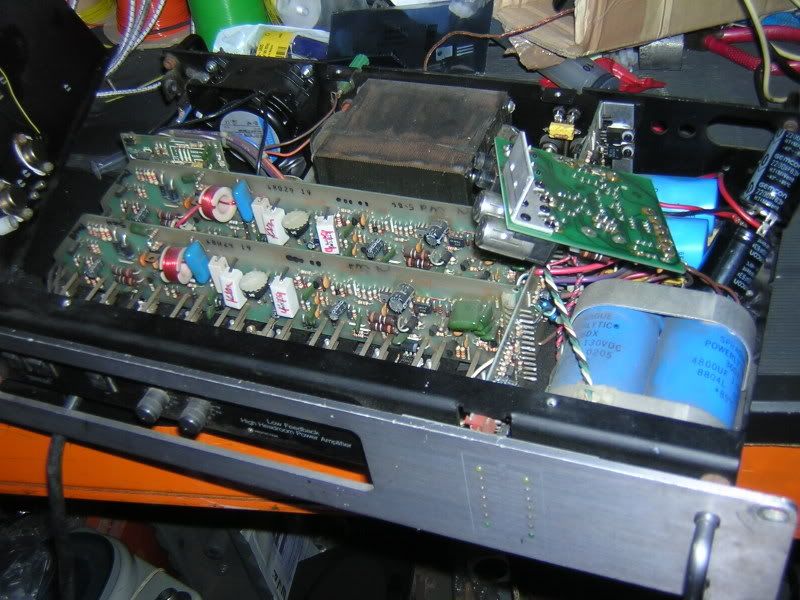I'm looking for some big caps to repair the PSU of a Carver HiFi amp. The amp requires a pair of 4800uF, 130V electrolytic caps for the high voltage rail. Unfortunately, these things are next to impossible to find.
the original caps are Sprague Powerlytic 36DX series 4800uF, 130V.
I've tried the obvious places, like MCM, Allied, Mouser, and Digikey. The closes that I have come so far is Mouser, but its a non-stocked item and I'd have to order a 10-pack for $360 to get the two caps that I actually need.
Can anyone recommend a source?
thanks.
the original caps are Sprague Powerlytic 36DX series 4800uF, 130V.
I've tried the obvious places, like MCM, Allied, Mouser, and Digikey. The closes that I have come so far is Mouser, but its a non-stocked item and I'd have to order a 10-pack for $360 to get the two caps that I actually need.
Can anyone recommend a source?
thanks.


 If a kick drum hit sends them flapping up and down like a pogo stick, with your shop lights flickering and horrible noises coming from the transformer, you know you have a problem...
If a kick drum hit sends them flapping up and down like a pogo stick, with your shop lights flickering and horrible noises coming from the transformer, you know you have a problem...

Comment